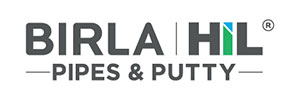MBR Based STP
Overview of MBR Based STP
The membrane bioreactor (MBR) has emerged as an efficient compact technology for municipal and industrial wastewater treatment. The major drawback impeding wider application of MBRs is membrane fouling, which significantly reduces membrane performance and lifespan, resulting in a significant increase in maintenance and operating costs. Finding sustainable membrane fouling mitigation strategies in MBRs has been one of the main concerns over the last two decades. This paper provides an overview of membrane fouling and studies conducted to identify mitigating strategies for fouling in MBRs. Classes of foulants, including biofoulants, organic foulants and inorganic foulants, as well as factors influencing membrane fouling are outlined.

Frequently Asked Questions
MBRs are designed to remove the fouling layer deposited on the membrane. These systems can operate in two modes: intermittent permeation and continuous aeration. The former involves intermittent cleaning of the membrane and is generally the most economical. The latter is more energy-intensive but can handle higher concentrations of MLSS. The process also requires a constant supply of water and power.
Hydrodynamics: The efficiency of MBRs depends on the hydrodynamics of the waste stream. Many factors affect the wastewater treatment process, including the composition of the wastewater, its physical properties, and the fluid boundary conditions. The design of an MBR also has some unique characteristics. There are several components to an MBR, including the type of membrane, the number of outlets attributed to the membrane, the orientation of the membranes, and the operation of the plant.
Residual Time Distribution (RTD): The RTD of an MBR is a function of its mixing. The residence time distribution is an important characteristic for the performance of an MBR. The design of the MBR determines the amount of pollutant removal and fouling control, and this property has an important effect on the energy usage and the size of the plant. The efficiency of the MBR can influence the whole life cost of an MBR.
The differences between MBR and SBR based STPs can be attributed to the different processes. SBR process produces surplus sludge, whereas the MBR process does not produce any surplus sludge. MBR is more cost-effective than SBR, so it is preferred for wastewater treatment. But which is better? And why is MBR more beneficial than SBR?
SBR is a discontinuous treatment process, so it does not work well for high-volume wastewater. MBR process is more efficient. The turbidity of effluent from MBR is less than 5 g/L MLSS. The wastewater from the SBR plant cannot meet sewage discharge requirements as it has a high concentration of solids. However, the MBR process is more economical, requiring fewer biological volumes.
A major disadvantage of SBR is that the process is more sensitive to changes in wastewater composition. These changes may change the biomass in the process, resulting in increased biomass loss and deteriorated wastewater discharge quality. This is a major problem, but technological improvements are possible. By upgrading the SBR process to an MBR-based one, wastewater treatment plants can still be reused while meeting the discharge requirements reliably, quickly and economically.
SBBR process works similar to SBR but uses a suspended growth component. Support materials include plastic media, abrasive particles, or a variety of other materials. Choosing the right support material for the wastewater contaminants and the treatment objectives is important. In addition, biofilms grow on the support material, which allows microorganisms to decompose waste in the water.
MBR-based STP systems are characterized by advanced treatment technology to provide high-quality reuse water at a competitive cost. The system is suitable for small- and medium-sized plants and is therefore preferred by customers looking for space-saving solutions. This article describes the MBR process and outlines its main advantages. This article also discusses the disadvantages of MBR systems and summarizes the key differences between MBR and MBR systems.
The main advantage of MBR is its ability to remove the fouling layer from the membrane surface effectively. This fouling layer is removed through the air-induced crossflow. Gas bubbling has been shown to improve the performance of MBRs. It has been shown that the optimal airflow rate is a function of the concentration of biomass and MLSS. Continuous aeration of MBR processes is advantageous as particles depositing on the membrane surface tend to diffuse back to the reactor during the resting phase.
MBR-based STP systems have low maintenance requirements, and they do not require high energy inputs or complex systems, and this makes them attractive to small-scale operators. In addition to low maintenance costs, they can be applied for different applications. The benefits of MBR over iMBR STP systems are: ‘shorter life-cycle: the system requires less energy to run, and it can be installed more efficiently and cost-effectively.
The major advantage of an MBR is its low operating costs. However, it is important to note that MBRs are more vulnerable to fouling than other technologies. Their critical MLSS value is usually between 10,000 and 17,000 mg/L, which can increase the viscosity of wastewater and increase the rate of membrane fouling. In contrast, STPs using an MBR have a high uptake rate of pollutants and a relatively small reactor volume.
Another major drawback of MBR is membrane fouling, which reduces membrane performance and lifespan. Membrane fouling is a significant cost factor in MBRs since it increases maintenance and operating costs. The sludge flocs, colloids, and solutes cause the filtration membrane to lose permeability. As a result, these particles are difficult to remove from sewage, which leads to an increase in operational and maintenance costs.
The most significant advantage of MBR-based STP is its ease of use. This technology is particularly suitable for industrial applications, and the cost is determined by the complexity of the system and materials used. The operating cost of an MBR is determined largely by the size and complexity of the unit, as well as the cost of raw materials and their availability. Some membranes also require pure oxygen to introduce adequate oxygen. This will help reduce problems with odour formation and foaming. The process requires careful attention to the optimisation of control parameters and process execution.
The MBR process produces a highly effective biosolid capable of filtering a wide variety of wastewater pollutants. This solid is a byproduct of the wastewater treatment process, and it is used to make activated sludge. This sludge is then treated to remove a variety of contaminants. This biosolid is typically recovered from wastewater using a process known as granular sludge treatment.
The mixing model for MBRs is similar to that for conventional activated sludge systems. Compartmental modelling involves deriving RTDs for the process and each unit. This type of modelling is fast and easy to do but relies on broad assumptions about the properties of the sub-units. In contrast, computational fluid dynamics (CFD) models predict hydrodynamics at a more fundamental level.
MBRs are often treated in parallel with conventional ASPs. This is because the MBR process can eliminate contaminants at once, and it is easier to scale up and operate than conventional activated sludge. In addition, an MBR may be more effective than conventional ASPs at reducing the volume of wastewater, thereby lowering operating costs. But there are several differences between the two.
Some researchers have studied the effect of granular media on TMP. However, a number of other studies have shown that MBRs can reduce the rate of aeration without compromising TMP. A study found that a mixture of granular media and MBRs had the same impact on the TMP. These results suggest that if MBRs are installed properly, they will remove biopolymers at a much lower rate.
Client testimonials
Our Clients
















